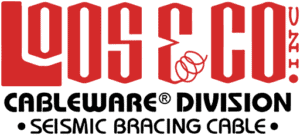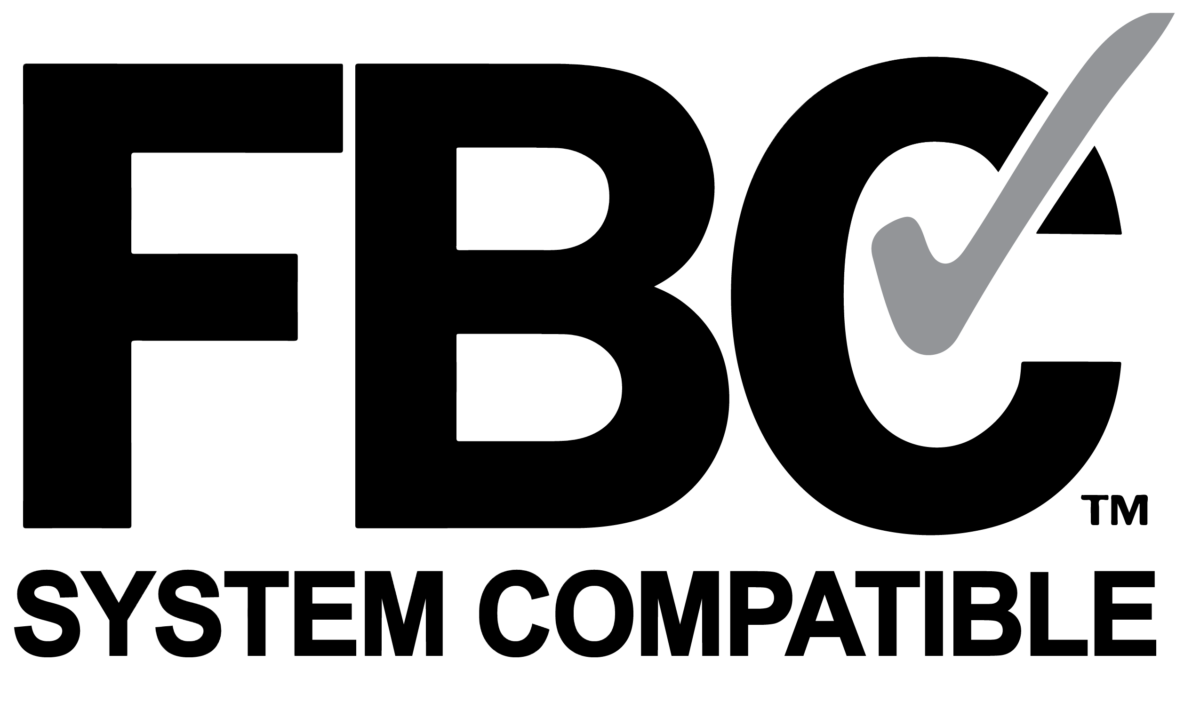Here at Loos Seismic Bracing we recieve some questions frequently from potential and current customers. Below you can look at some of the questions we commonly recieve and our answers, written by our Seismic Bracing Cable experts!
Installation
What is the First Step to Using Seismic Bracing?
We strongly recommend using our Engineers’ Tools. Using this calculator guides the user step by step to create and save designs for multiple projects. You can also calculate your total cost of materials for your project and then will have enough information to begin your seismic bracing project.
Is Bracing Cable Fast to Install?
Unlike rigid bracing, you do not need to have different size pipes to complete seismic bracing installations. With cable you will be able to just cut your spool of cable to the desired length you need, making the process fast and allowing you to quickly move to your next seismic bracing job site installation. The small size of our product also makes transport easy and fast.
How Do I Install Seismic Bracing Cable?
Rather than providing a step-by-step guide here, we recommened you our expertly written design guides. If you require a more visual installation how-to guide, check out our available installation videos here. Additionally, our Engineers’ Tools make it easier than ever to fill out the NFPA-13 Seismic Bracing Calculation form and caluculate your material costs for the project.
What are the Sizes of Bracing Cable Offered?
Our bracing cable is available in four sizes, #GO3-CBL Gold Cable, #OR4-CBL Orange Cable, #GR6-CBL Green Cable, and #BL8-CBL Black Cable. Each cable has a different load rating and comes in 250 ft. spools.
What is the Maximum Object Size I can Secure with Bracing Cable?
There is no maximum size! As our cable comes in 250 ft. spools, when you need to secure a large object you can just use a long length of cable from the spool.
Cable & Hardware
Do I Need to use Different Fitting Sizes to Complete Bracing Installations?
No! One of the best things about seismic bracing cable is that the diameter of your cable is one size, meaning you will only need to use one fitting type. In rigid bracing projects, all the different size pipes have different diameters which means you would need to have multiple sizes and types of fittings to complete a bracing project.
Why is your Attachment Hardware Zinc-Plated?
Our attachment hardware is zinc-plated to provide superior resistance to corrosion and other elements.
Tools
What Other Products do you Offer?
Along with our bracing cable, we also offer attachement hardware, bracing kits, swaging & crimping tools, and cable cutters. You can learn more about each of these products by going to our main product page here.
What Types of Attachment Hardware are Available?
For attachement hardware, various options are available. Our product line includes, Oval Sleeves, Seismic Anchoring Fittings (SAFs), Seismic Anchoring Fittings Retrofit (SAFRs), Seismic Anchoring Fittings – 2 Way (SAF2s), Seismic Anchoring Fittings – 2 Way Retrofit (SAF2Rs), & Low Pry Fittings (LPFs).
Do you Offer Swaging & Crimping Tools?
Yes! We have a range of swaging and crimping tools available. Options include, Locoloc® #0-3-SBHS Handswager, Locoloc® #0-3/16SC Handswager, Locoloc® #3-346-SB Handswager, Locoloc® #3-346-SB Handswager, Locoloc® 0-1/4 Handswager, and Locoloc® SL-7NDK-SB Battery Handswager.
Why Should I Choose a Battery Swager Over a Hand Swager?
When you want a powerful swaging tool that has repleacable dies, allowing you to swage plated oval sleeves for #GO3 (GOLD), #OR4 (ORANGE), #GR6 (GREEN), and #BL8 (BLACK) sizes, our SL-7NDK-SB Battery Swager is the perfect tool. Hand swagers are cost effective but limited to only being able to swage one specific size, depending on the tool.
Cable Bracing Benefits
Why Switch from Rigid to Cable Sway Bracing?
While there are many reasons to consider switching from rigid to cable sway, if we had to pick three it would be the cost difference, ease of installation, and efficency. Rigid bracing has long been considered the seismic bracing standard, however its flaws in requiring numerous types of fittings for installations, various pipe sizes being required, and heaviness make the solution much more cumbersome than cable bracing.
How Many People Do I Need to Complete a Seismic Installation?
As the bracing is fairly light and easily portable, you can technically complete installations with just one crew member. Rigid commonly requires at least three people to work on bracing installations, so seismic bracing is much more convenient.
What are the Cost Differences Between Rigid and Seismic Bracing?
Seismic cable is considered to be a much cheaper alternative than rigid. Seismic cable takes up much less room in inventory and does not need to be transported on long bed vehicles to fit various pipe sizes. The installation also requires less time on the job and fewer crew members. These factors plus the inherent cheaper cost of the product make seismic bracing far cheaper than the tools required for rigid bracing.
How Easy is Switching to Cable Sway Bracing?
The switch is one to one! You will find the transition over to cable sway bracing seamless and after learning how to properly install the bracing by reading our design guides or watching our how to videos you will be completing seismic installations in no time!
Can I See Some of the Projects Seismic Bracing Cable Has Been Used in?
Yes you can! Our gallery page here, showcases some of the biggest projects where bracing cable has been used.
Company Info
Where Can I Get Company Updates and Product News?
Our blog page is a great place to start if you want to find informative content & stay-up-to-date with Loos Seismic Bracing. You can also subscribe to our marketing emails. Check out our blog page here, and fill out our subscribe form for marketing email updates!
Does Loos Seismic Bracing Have any Distributors?
Yes we do! You can take a look at our full list of distributors on our webpage here.
Does Seismic Bracing Cable Comply to Industry Specifications?
Our cable is fully code compliant and Third-Party Listed for use in complying with NFPA-13, the International Building Code (IBC), the ASCE 19 and the ASCE 7.
Will my Seismic Bracing Cable Pass Inspection?
As long as your seismic bracing cable is properly installed, you will not have a problem passing inspections. The only time we ever hear about our cable failing inspection is when the product is installed incorrectly, making it very important to read our installation literature.








